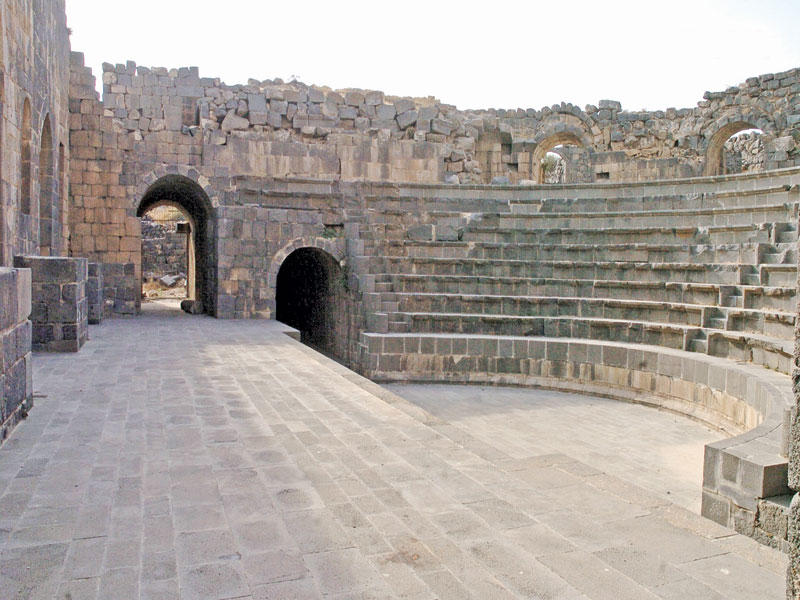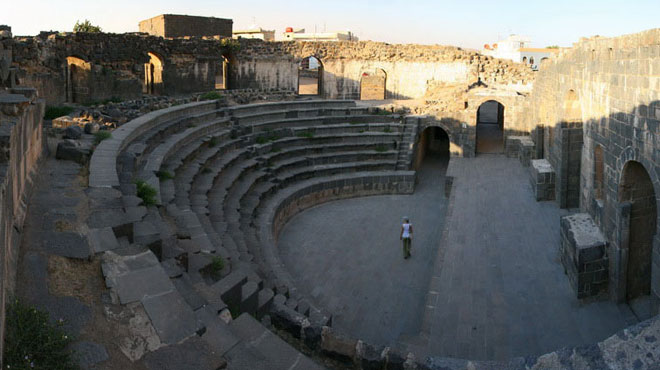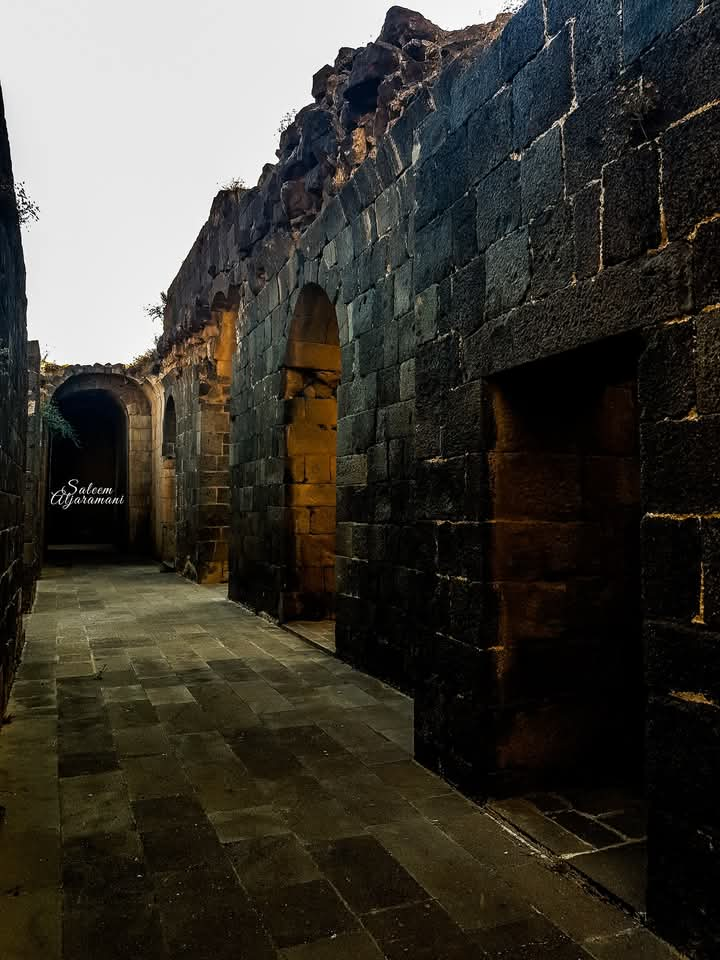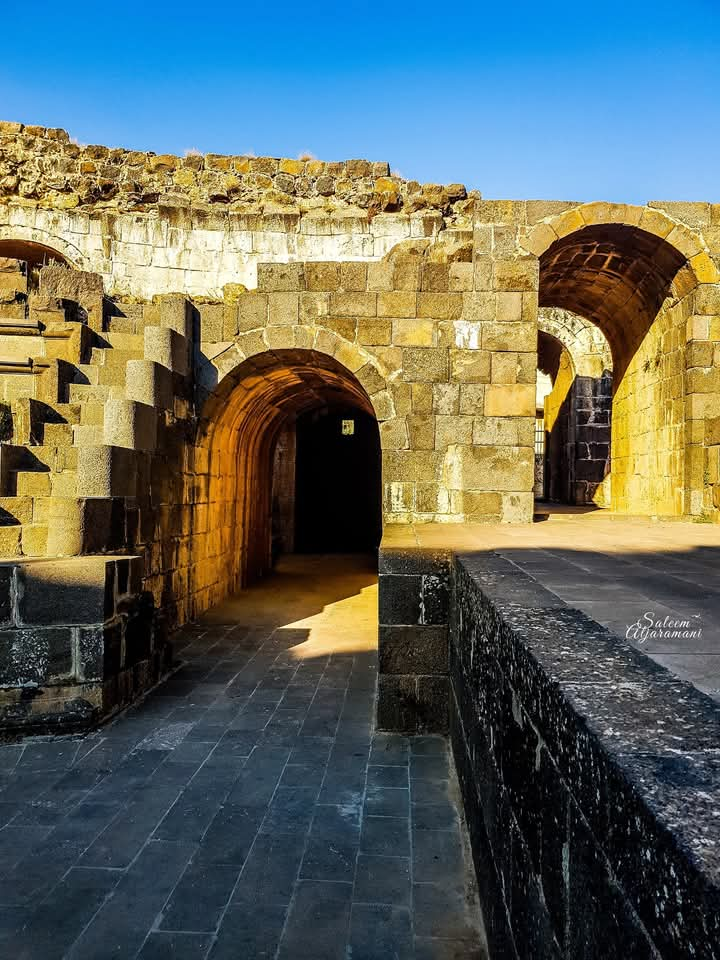In the city of Shahba, located north of As-Suwayda Governorate, the Roman theater stands as one of the most magnificent architectural testaments to the grandeur of the Roman era in southern Syria. Built in the 3rd century AD during the reign of Emperor Philip the Arab,who was born in Shahba and transformed it into a Roman-style city rivaling the great metropolises of the empire,the theater reflects both civic pride and imperial ambition.
Constructed from black basalt stone, the theater showcases majestic Roman engineering, accommodating nearly 4,000 spectators on semi-circular tiered seating oriented toward the stage. It was seamlessly integrated into the meticulously planned Roman city layout, connected to the Cardo (main street), the forum, and surrounding temples,signifying its central role in public life at the time.
The theater was not merely a venue for artistic performances, but a public square where people gathered for celebrations and civic events, making it a true social and cultural hub. The remaining decorative elements,arches, carvings, and scattered inscriptions,reveal a refined artistic sensibility, highlighting the prosperity and vitality of the city during that era.
Despite the toll of time and earthquakes, the theater still stands resilient, and today it is regarded as one of the most significant archaeological landmarks in southern Syria. In recent years, it has even been revived as a site for artistic performances and cultural festivals, symbolically reclaiming a part of its original spirit.
Documenting the Roman Theater of Shahba is not merely a study of silent stones,it is a resurrection of a city etched into imperial memory, and a celebration of an architectural and cultural legacy that continues to pulse with beauty, defying the dust of centuries and the passage of time.










